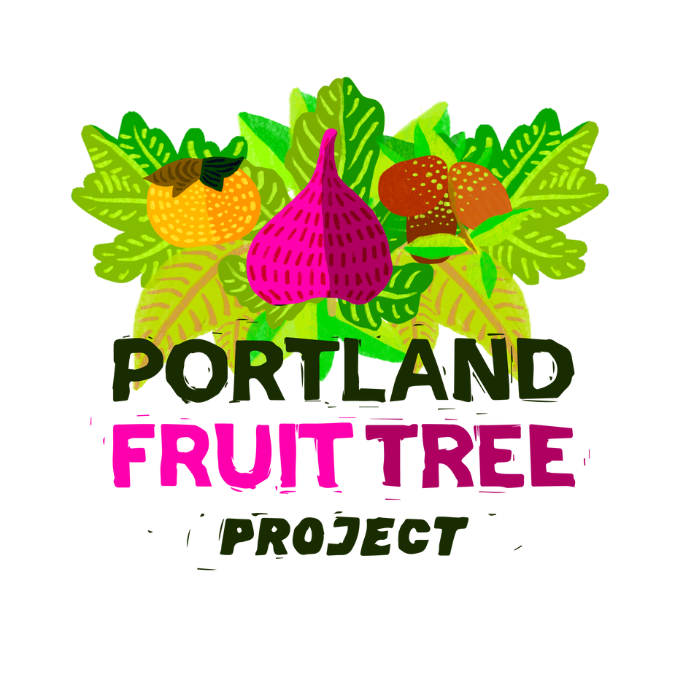Fruit Trees and Extreme Heat
Post sponsored by Welcome to PDX Real Estate Agent, Deb
〰️
Post sponsored by Welcome to PDX Real Estate Agent, Deb 〰️
Extreme Heat is Extremely Hard on Fruit Trees
Extreme heat is increasingly common as our climate becomes less predictable. High temperatures can affect fruit trees, impacting their growth, health, and fruit production. Let’s talk a bit about what we can do to protect our trees!
How are we defining extreme heat? For our region, we’re saying that 4+ days at 90 degrees or higher, or any day over 97 degrees is extreme for our fruit trees.
Sunburnt fruit - these were frozen and the bad bits will get cut out with the good parts used for jam
How Extreme Heat Affects Fruit Trees
Water Stress: Extreme heat increases how fast water evaporates from a soil AND the tree’s leaves. Water stress can lead to wilting, leaf scorch, and even tree death if not addressed.
Reduced Photosynthesis: High temperatures can make it hard for trees to convert sunlight to energy. When temperatures exceed optimal levels (generally between 60-85°F for most fruit trees), the efficiency of photosynthesis decreases, affecting the tree's growth and fruit development.
Fruit Damage: Prolonged exposure to extreme heat can cause sunburn on fruit, leading to discoloration, toughening of the skin, and impacting flavor and how long it will store once picked. Additionally, high temperatures can cause fruit to ripen prematurely, leading to poor flavor and texture.
Increased Pest and Disease Pressure: Heat-stressed trees are more vulnerable to pests and diseases.
Flower and Fruit Drop: Extreme heat can cause flowers and immature fruit to drop prematurely, reducing the overall yield. This is particularly problematic during the critical stages of flowering and fruit setting.
You Can Help Your Trees!
Mulching: Apply a thick layer of mulch around the base of fruit trees to help retain soil moisture, regulate soil temperature, and reduce water stress. Organic mulches like straw, wood chips, or compost are effective in conserving moisture and providing nutrients as they decompose. Have you heard about Chip Drop? It’s a great (mostly free) resource!
Watering: Ensure your fruit trees receive sufficient water, especially during heat waves. Deep watering is crucial to encourage deep root growth and prevent water stress. Using drip irrigation or soaker hoses can help deliver water directly to the root zone efficiently. Read more on our blog! (LINK)
Shade and Protection: Shade cloths or temporary shading structures can protect trees from the harshest afternoon sun. Whitewashing tree trunks with a diluted white latex paint can also prevent sunburn on the bark. Don’t have time to get shade cloth? Use old sheets or even a pop up canopy if it works on your trees!
Pruning: Prune trees to maintain an open canopy that allows for better air circulation and light penetration. However, avoid heavy pruning during extreme heat, as this can stress the trees further. Don’t assume that the branches that might LOOK dead actually ARE dead right away - give them some time to show growth before making the hard cuts.
Soil Health: Healthy soil with good organic matter content can retain moisture better and provide a buffer against extreme temperatures. Regularly amend soil with compost and other organic materials to improve its water-holding capacity and fertility.
Harvesting: During periods of extreme heat, monitor fruit development closely and harvest promptly to avoid sunburn and heat damage. Picking fruit at the right time ensures better quality and reduces losses. If it’s too late for your fruit, pick the damaged fruit and put it in your green bin (NOT your home compost!). There is always next year, but don’t let fallen fruit become a pest/disease incubator for next season!
Do you have questions or need help?
Check out the Home Orchard Education Center for workshops and more
Find articles and more with the Oregon State University Extension school
Take the next step with Portland Fruit Tree Project!
This content was generously supported by:
Are you interested in sponsoring Portland Fruit Tree Project content? Send us an email!



